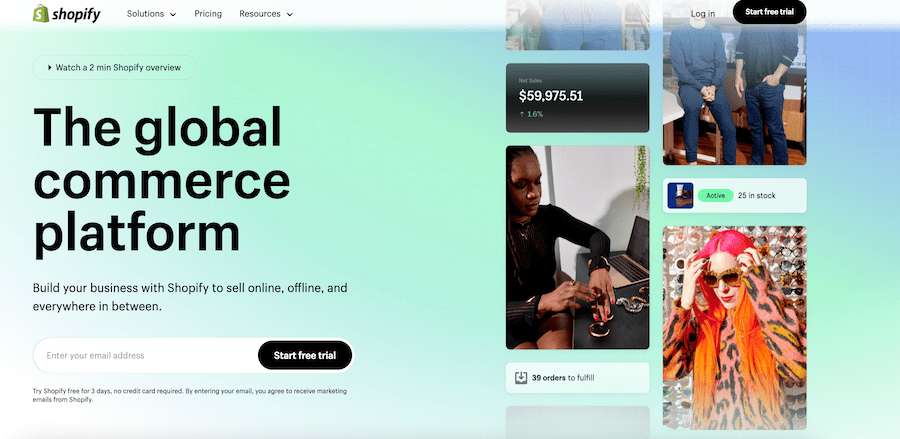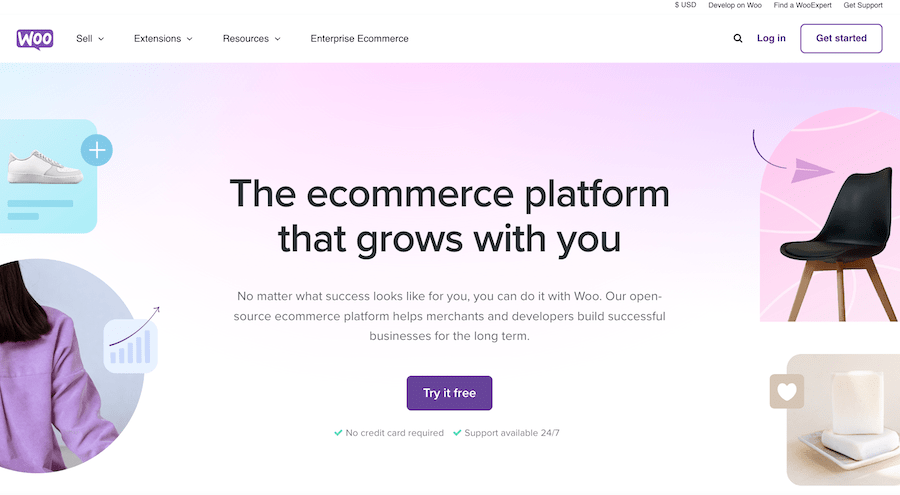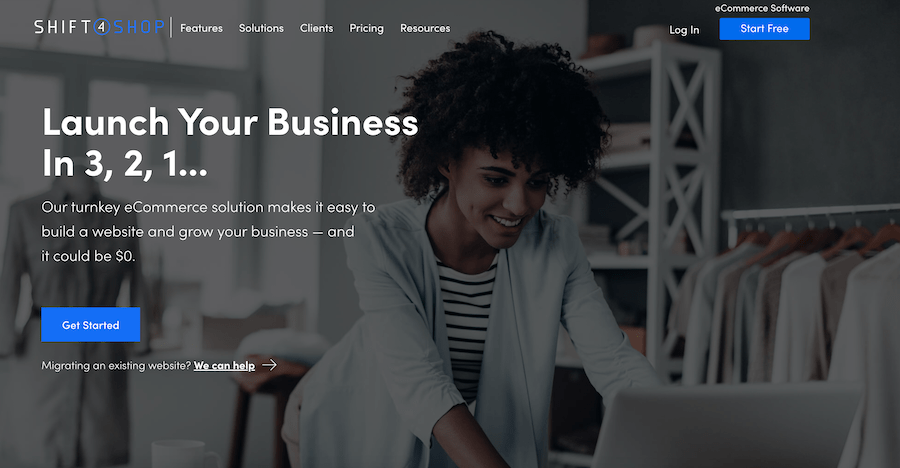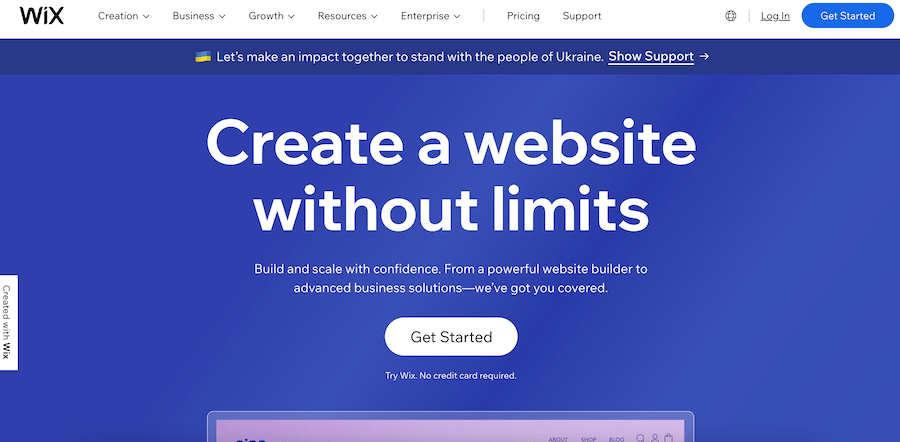How to Start a Dropshipping Clothing Business in 2025?
Being your own boss certainly brings aboard a multitude of benefits. Having the opportunity to grasp complete control over your career is a dream come true for many people.
Those who do manage to take advantage of it are given the freedom to set up their company’s guidelines, create their ideal working environment, and easily switch from working from the office to working from home, a precious flexibility that has become significantly important, especially in this post-pandemic day and age.
Because of these and many more reasons you can learn about by going through the latest dropshipping statistics, an increasing number of entrepreneurs are showing interest in eCommerce retail. And as it seems, the fashion segment of this market has been in particular bringing large profits, surpassing 770 billion USD in 2024.
While promising, building an online dropshipping clothing business from the ground up does come with its own challenges.
In this article, we’ll walk you through all the necessary steps that’ll lead you to successfully launching a fashion dropshipping store.
:format(webp)/https%3A%2F%2Fbrandsgateway.com%2Fapp%2Fuploads%2F2024%2F06%2Fbanner.jpg)
Looking for a reliable dropshipping or wholesale supplier?
Join us today for top-quality products and unbeatable prices.
How does dropshipping work?
Dropshipping is a retail business model that allows online store owners to sell products without having an inventory. Instead, dropshippers collaborate with suppliers who do the actual packing and shipping.
In other words, whenever consumers buy something from a dropshipping store, the store’s owner forwards the order to its supplier. Once the supplier has received it, they process it and deliver the product directly to the customers.
Continue reading: What is Dropshipping and How to Start a Dropshipping Business?
How to start your own dropshipping clothing business?
Now that you’re familiar with the dropshipping business model, it’s time to guide you through the process of setting up your own clothing dropshipping store, be it the traditional eCommerce model or the reverse dropshipping method.
The following steps include comprehensive information that’ll assist you in constructing your business plan and launching your company smoothly and stress-free.
STEP 1: Find your fashion niche
The very foundation of your dropshipping clothing business depends on the fashion niche you choose. Here’s how to effectively conduct niche research:
- Identify your interests. Select a niche that genuinely ignites your passion. Your enthusiasm for the products you sell fuels your commitment to the business. Remember that your niche defines not only your product range but also your brand identity, values, and customer interactions.
- Investigate product demand: As Forbes advises, ensure there’s a demand for the products in your chosen niche. A niche without demand can turn your endeavor into a mere hobby. Validate the need for your niche’s offerings in the market to secure a profitable venture.
- Analyze profit potential. Estimate profit margins by researching product costs and potential selling prices. Calculate potential selling prices and expenses you’ll need to invest in such as marketing, shipping, and platform fees.
- Examine your competitors. Check out what works and what doesn’t work for your competitors. Learn from their successes and failures and identify gaps where you can differentiate yourself.
- Study potential niches. Pick out a niche where you have a thorough understanding of the segment’s overall size, profit margins, customer base, and growth expectations. Or, if you don’t, study potential niches before committing to one. A profound grasp of your niche is one of the best strategic advantages.
Continue reading: Best Dropshipping Niches for Your Clothing Business
STEP 2: Choose the best-selling products
Now that you’ve successfully identified your fashion niche, the next crucial step is choosing the best-selling products within that niche. It’s essential to not only offer stylish and in-demand items but also to ensure they align with your target audience’s preferences.
So, let’s take a look at the top 10 most profitable fashion items that will not only maximize your profits but also allow you to cater to a broad customer base.
Top 10 most profitable fashion products to sell
These top 10 fashion products cover a wide spectrum of styles and preferences, allowing you to cater to a broad customer base while maximizing your profits in the dropshipping clothing business.
- T-Shirts: Basics t-shirts graphic tees, vintage-style shirts, and plain everyday shirts are wardrobe staples for many.
- Pants: Whether it’s jeans, shorts, chinos, or formal pants, pants make reliable sellers all year round.
- Outerwear: Offer seasonal outerwear like winter coats, lightweight jackets, and trendy vests to cater to varying climates.
- Footwear: From chic sneakers and ankle boots to strappy sandals, shoes are a fashion staple that customers love to shop for.
- Dresses: Dresses are an all-time winning women’s category, selling with the speed of light any time of the year, and being a staple in women’s closets for centuries.
- Handbags: With a revenue of over 60 billion USD, investing in a range of handbags, including crossbody bags, totes, and clutches, is a perfect way to both earn good profits and meet diverse customer preferences.
- Jewelry: Provide customers with an even more stylish shopping experience by stocking your store with a curated collection of jewelry that’ll complement their outfits perfectly.
- Sunglasses: Offering both fashion and functionality, sunglasses are a constant hot commodity, especially during the sunny seasons.
- Watches: Watches are classic timepieces that never go out of style, and with that, they’ll always be in demand among customers.
- Blazers: Versatile blazers can transform an outfit from casual to sophisticated. Stock your store with appealing blazers that’ll allow your customers to create a polished look.
Continue reading: Winning Products to Dropship in the Fashion Industry
STEP 3: Check out the competition
In the vast landscape of the retail market, chances are someone has already ventured into your chosen niche, possibly with more experience and deeper product knowledge.
However, rather than feeling disheartened, view this as an opportunity to gain insights and enhance your own strategies. Understanding your competitors and their tactics is crucial to refine your business approach. Here’s how to study your competitors:
- Analyze their websites. Familiarize yourself with their website structure and see what changes you can implement to make yours better. Optimize your web design by seeking more engaging layouts, conversion-focused product descriptions, and better-performing visuals. Your website’s performance can be a significant differentiator in the competitive world of online fashion retail.
- Examine their product range. Review their product catalog and pricing. Assess the quality and uniqueness of their offerings and identify any gaps or trends in their product selections.
- Monitor their marketing strategies. Study their marketing campaigns and observe how their audience responds to them. This valuable information can be harnessed to your advantage. If you notice any areas where their customers might have reservations, tailor your advertising strategies and make them more appealing than theirs.
- Follow their social media accounts. Keeping tabs on your competitors’ social media presence is a great way to offer customers the attention they seek. In instances where competitors may fall short in engaging with their audience, step in. Interact with potential clients on social media platforms. Utilize features like Instagram stories and captivating fashion captions to solidify your brand’s presence.
Continue reading: How to do an eCommerce Competitor Analysis?
STEP 4: Find a reliable dropshipping supplier
When running a dropshipping clothing store, your supplier plays the most crucial part in your business as without them there isn’t going to be any business at all. Any issues with the quality of products ultimately reflect on your brand.
How to avoid unreliable suppliers?
- Look for reviews. Look for reviews, ratings, and any history of negative feedback on trustworthy sites like Trustpilot. You can further read on forums and social media for customer experiences.
- Verify credentials. Legitimate suppliers often have verifiable credentials, So, check for certifications and licenses, as well as for proof of product authenticity which is especially important when it comes to selling luxury fashion products.
- Get in touch. Engage with the supplier’s customer support or sales team. Ask questions about their products, shipping methods, and policies. Prompt and helpful responses take them as an indicator of reliability.
How to find reliable suppliers?
- Check out directories and marketplaces. Make use of online directories and marketplaces that enable you to search for dropshipping clothing suppliers based on various criteria such as location, product offerings, and feedback from customers.
- Attend industry trade shows and conferences. Consider attending trade shows, exhibitions, and even eCommerce conferences. These events provide an excellent opportunity to establish direct contacts with potential suppliers.
- Engage in networking: Take the time to build connections within the industry. Participate in industry forums, virtual communities, and social media platforms dedicated to clothing and fashion. Connect with fellow dropshippers in the field who can offer valuable suggestions and insights about trustworthy suppliers they’ve collaborated with.
The most important questions to ask your dropshipping supplier
Use these questions to assess the suitability of a dropshipping supplier for your clothing business:
- What products do you offer for dropshipping?
- Are your products authentic and high quality?
- How often do you update the product catalog?
- Do you have MOQ?
- What are your pricing and payment terms?
- What is your shipping policy?
- Do you provide tracking information?
- How do you handle returns and refunds?
- What eCommerce platforms do you support?
- How can I get in touch with your customer support?
Continue reading: 25 Questions to Ask Your Dropshipping Supplier Before Getting Started
STEP 5: Choose your eCommerce platform
Nowadays, you’ll stumble upon many eCommerce platforms that’ll do all the hard work for you.
Here are our top four picks. Each of them comes with different features and eCommerce development costs, allowing you to choose the right one for your business needs and budget.
- Shopify. Shopify is a platform that’ll cater to all your needs and requirements when it comes to setting up a website. With the opportunity to choose from three different subscription plans, Shopify will enable you to customize your fashion store to your liking by choosing the theme, color, fonts, logo, and any other design elements. Furthermore, the e-store platform sets you up automatically with a free store domain name.
Read more: How to start dropshipping with Shopify?

- WooCommerce. WooCommerce is an open-source platform that comes with an abundance of tools that include thousands of dropshipping plugins, convenient payment methods, beautiful web templates, and more. The platform can be used free of charge, however, in order to build a functional dropshipping store, you’ll need to invest in purchasing a few plugins as well as an engaging design.
Read more: How to start dropshipping with WooCommerce?

- Shift4Shop. Available to dropshippers since 1997, Shift4Shop is another affordable and well-equipped eCommerce platform. Shift4Shop offers a handy collection of web-building, marketing, and built-in SEO tools that’ll help you kick-start your business and transform it into a successful venture.
Read more: How to start dropshipping with Shift4Shop?

Read more: How to start dropshipping with Wix?

STEP 6: Set up your eCommerce store
Your online shop is going to be the centerpiece responsible for managing all of your business’s operations. From receiving orders and forwarding them to suppliers to acquiring payments and offering customer support.
In the case of traditional brick-and-mortar stores, the shop window is one of the very first things that shape the customer’s first impressions and influence them into buying something.
In the event of a dropshipping store, however, it’s the store’s website that serves as your storefront where customers can window-shop before deciding on a purchase.
Depending on the platform you choose, you’ll need to follow a few simple steps in order to get your dropshipping store live. Overall, the main tasks most platforms will require from you include:
- STEP 1: Create an account on the platform of your choice
- STEP 2: Choose your web design
- STEP 3: Register your domain
- STEP 4: Install plugins (if necessary)
- STEP 5: Set up your payment methods
- STEP 6: Set up your delivery and store policies
- STEP 7: Import your products
- STEP 8: Optimize your website for SEO
- STEP 9: Launch your store
Continue reading: How to Start an Online Boutique [A Guide with 12 Simple Steps]
STEP 7: Promote your dropshipping clothing store
In order to generate big sales and increase your eCommerce conversion rate to a maximum, you’ll have to start driving substantial traffic to your website. In order to do that, you’ll have to get a hold of great marketing strategies and similar dropshipping resources.
Let’s explore how you can use both free and paid advertising methods to captivate your target audience and generate significant revenue.
Start with organic advertising
As is the case with many dropshipping beginners, you might find yourself with a limited budget that wouldn’t cover expensive publicity. Nevertheless, there’s a plethora of advertising tools and strategies available to use cost-free or for an affordable fee.
You can start out with the following:
- Create engaging blog posts: Start a fashion blog to create engaging articles that will resonate with your target audience. Share them on social media and across forum communities to improve your chances of reaching a wide audience.
- Record podcasts: Get on the trend and give podcasts a try. You can record eCommerce podcasts where you can share your business story and get closer to your customers.
- Build a social media presence: Posts regularly on business social media channels, such as Facebook, Instagram, and TikTok, to keep customers engaged at all times.
Start with paid advertising
Another way to generate traffic to your store is, of course, paid advertising which can be done through:
- Google ads. Pay-per-click advertising programs such as Google Ads and Google Shopping Ads allow you to set up a monthly budget and take full control of running your advertisements (you can pause them or restart them whenever you want to).
- Social media ads. Facebook ads, Instagram ads, and TikTok ads function similarly, hence, giving you the opportunity to generate traffic for low fares and keep an eye on your budget via the Facebook ad metrics.
- Affiliate marketing. Online individuals, such as bloggers and influencers, often collaborate with clothing stores through affiliate marketing, exposing your business to a wide number of potential customers.
- Email marketing: Build a subscriber list and send regular newsletters featuring new arrivals, style tips, and exclusive discounts to keep your audience engaged.
- Influencer marketing: Collaborate with influencers for sponsored posts or stories. Paid partnerships with influencers are a great way to expose your products to their vast following base.

STEP 8: Optimize your store
Now, as you near the finish line, it’s crucial to optimize your dropshipping clothing store.
Just as the storefront of a physical brick-and-mortar store influences a customer’s first impression, your online store’s design and functionality play a similar role in the digital world.
Potential customers will “window-shop” your store before deciding to make a purchase. Therefore, it’s paramount to ensure a user-friendly and attractive shopping experience.
Here are the key steps to optimize your dropshipping store:
- Search engine optimization (SEO). Optimize your website for search engines to improve organic traffic. Use relevant keywords in product descriptions, images, meta tags, and blog posts. Keep a close eye on the keywords you’re targeting and update them in all of your content if necessary.
- High-quality images. Use high-resolution images that showcase your products from different angles and in the best light possible.
- Detailed product descriptions. Provide accurate product descriptions that will include the most relevant information about your products.
- Mobile responsiveness. Ensure your website is fully mobile-responsive as many customers shop from smartphones and tablets.
- Site speed. Fast-loading pages have proved to enhance user experience and reduce bounce rates. So, keep an eye on the site’s speed and optimize it regularly.
- Improve your web design and structure. Frequently check on your web design and structure and, if necessary, change things up to make it easier for customers to navigate around your site and find your store more appealing.
Why start a dropshipping clothing business with BrandsGateway?
BrandsGateway is a dropshipping supplier that offers a unique opportunity to open a fashion dropshipping store that sells luxury designer clothing. By offering high-end fashion brands such as Gucci, Dolce & Gabbana, Jimmy Choo, Prada, Versace, and many more, you can differentiate your dropshipping clothing business and ensure guaranteed profits.
What benefits BrandsGateway offers?
- Versatile product selection. BrandsGateway offers various product categories in the luxury segment, including clothing, shoes, bags, accessories, jewelry, sunglasses and frames, and watches.
- Product authenticity. All merchandise is authentic.
- No minimum order quantity. With no MOQ for dropshipping orders, BrandsGateway is accessible to businesses of all sizes.
- Automated dropshipping. You can benefit from an automated dropshipping solution that’ll allow you to get automated inventory updates and avoid listing out-of-stock products as well as automated order processing.
- Platform integration. The supplier offers integration for eCommerce platforms such as Shopify, WooCommerce, Wix, Shift4Shop, and BigCommerce, and Rest API integration for custom-made websites.
- Online marketplaces. You have full support to sell on online marketplaces Amazon and eBay.
- Turnkey solution. Having a partnership with turnkey service provider LemonDev, BrandsGateway can help you build a website from scratch.
- Return policy. Their return policy allows for convenient returns within 14 days.
For a more in-depth guide, continue to our tutorial on how to build a dropshipping business with BrandsGateway.
Start your dropshipping clothing store today
There’s nothing better than creating your own dropshipping business and transforming it into the prosperous company you’ve always imagined having. You can read about such an experience in this dropshipping case study.
However, the road to success can be a bumpy ride. It may take a while to get your head in the game, but eventually, it’ll pay off.
Despite being quite a tough challenge, launching a clothing dropshipping store can be a rewarding experience that’ll bring you an amazing sense of accomplishment.
In order to improve your chances of successfully building your online boutique, it’s key to have a rigorously mapped out business plan in mind to guide you through the whole process: from preparing to launching to promoting.
By carefully following our detailed steps, you’ll have your store up and running before you know it.
FAQ
-
Yes, dropshipping clothing is a highly lucrative way to earn good profits. With the fashion market projected to earn close to 770 billion USD by the end of 2023, selling clothing in your dropshipping store can certainly pay off.
-
As long as you obey the laws and regulations of your country, dropshipping clothes is completely legal.
-
Many dropshipping businesses start with a relatively low initial investment compared to traditional retail.Typically, you’ll need to cover expenses like setting up a website (domain and hosting costs), eCommerce platform fees (if applicable), marketing expenses, and any necessary tools or apps.
-
Earnings for clothing dropshippers can vary widely and can depend on many factors such as niche selection, marketing efforts, product quality, and competition. For example, those who dropship luxury clothing tend to earn more as they get to work with high-profit margins compared to those who sell cheaper products.
Related articles
Our clients' success stories speak volumes about the impact BrandsGateway has had on their businesses.
View More Articles








:format(webp)/https%3A%2F%2Fbrandsgateway.com%2Fapp%2Fuploads%2F2024%2F07%2FScreenshot_20240618_140550_Gallery.jpg)
:format(webp)/https%3A%2F%2Fprod-img.s3.fr-par.scw.cloud%2F2024%2F04%2Fstore-without-inventory-22d26be1-172.png)
:format(webp)/https%3A%2F%2Fprod-brandsgateway-images.s3.fr-par.scw.cloud%2F2021%2F05%2FList-of-the-best-dropshipping-books-a3e8f413-00a.jpg)
:format(webp)/https%3A%2F%2Fprod-brandsgateway-images.s3.fr-par.scw.cloud%2F2020%2F11%2Fwholesale-clothing-suppliers-usa-bed8e72a-d5e.jpg)
:format(webp)/https%3A%2F%2Fprod-brandsgateway-images.s3.fr-par.scw.cloud%2F2021%2F09%2Ffashion-accessories-dropshipping-9f7275a4-84a.jpg)
:format(webp)/https%3A%2F%2Fprod-brandsgateway-images.s3.fr-par.scw.cloud%2F2022%2F03%2Fonline-store-pricing-96cb60cd-147.jpg)
:format(webp)/https%3A%2F%2Fprod-brandsgateway-images.s3.fr-par.scw.cloud%2F2022%2F12%2Fdropship-trending-products-5486f213-aff.png)
:format(webp)/https%3A%2F%2Fprod-img.s3.fr-par.scw.cloud%2F2023%2F12%2Fshopify-vs-bigcommerce-4a0bdbb8-850.png)
:format(webp)/https%3A%2F%2Fprod-brandsgateway-images.s3.fr-par.scw.cloud%2F2023%2F04%2Fdropshipping-watches-19f6f0c7-d42.png)